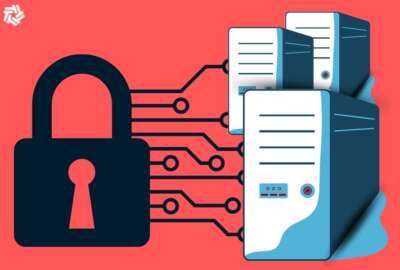The Army has been trying to simplify its networks for decades. Officials say this time is different
In an address to the Association of the U.S. Army, Gen. Randy George, the service's new chief of staff, demanded a simpler, easier-to-use network. He's the latest...
The Army has been talking for many, many years about the need to simplify its IT networks. But officials say they’re now poised to make more progress than ever before, largely because of some recent organizational changes in how the Army funds and buys information technology. It also doesn’t hurt that network simplification is a major priority for the Army’s new chief of staff.
In his first major speech to the Association of the U.S. Army’s annual conference in Washington, Gen. Randy George reiterated previous chiefs’ position that the network is the Army’s biggest modernization priority, and made clear exactly what he thinks the biggest problems are.
“Command and control is foundational to how we fight, and frankly, a lot of the systems that we have today just don’t support effective C2,” he said. “Antenna farms and endless server stacks are conspicuous and generate too much electromagnetic signature. On today’s battlefield, a commander should be able to see to a fight with simple tech — a tablet, for instance — equipment that is agile, mobile and updatable. If we slog around the battlefield with massive operations centers which are difficult to set up and often contractor-supported, we will get pounded. The Russians are learning this lesson several times a day and we will not learn the hard way.”
Even though the Army has faced similar network complexity problems for decades, the Army officials in charge of building and operating the network say a lot has changed — very recently — to help solve the problem. They argue the biggest ones are organizational. For example, within the last few months, the Army consolidated effectively all of its acquisition authority for network modernization within one program executive office; until then, the responsibility was split between two PEOs.
“Don’t underestimate institutional change, because I would submit to you that’s one of the key things that is very, very different here,” Lt. Gen. John Morrison, the Army’s deputy chief of staff for command, control, communications, cyber operations and networks (G-6) told reporters. “We’re used to 40 to 60 different organizational networks that were out there, and that made us wildly inefficient. It made us wildly operationally ineffective, because we induced complexity everywhere. And so this is an institutional shift: We’re not going to do that anymore.”
Morrison argued other, earlier, institutional moves the Army has already made will help too, including the centralization of network management and defense responsibilities under Army Cyber Command, and governance and IT resource sponsorship under the Army CIO’s office and Morrison’s own office, respectively. He said those changes, together, should let the Army coalesce around something that looks like a unified network by fiscal year 2025.
As for acquisition and capability development for the network, those decisions now all fall to the Army’s Program Executive Officer for Command, Control and Communications-Tactical (PEO-C3T). Previously, PEO-C3T handled the tactical side of the Army’s networks, while the Program Executive Office for Enterprise Information Systems handled enterprise networks.
Mark Kitz, the office’s top official, said there are already several specific examples of actions his office has taken to try to answer George’s demand for a simpler network.
For instance, with regard to those complicated command posts: The Army had been planning to buy a significant number that were based around the service’s medium tactical vehicles. It’s since rescinded the RFP after deciding it needs to rethink the problem.
“Another example is unified network operations, which we’re exploring in 2024 to integrate across enterprise and tactical to one unified network,” Kitz said. “We’re going after a competitive prototyping strategy to leverage the existing technologies that we have in our formations and in commercial spaces. Another example is in our next generation tactical terminal program, where we’re consolidating our SATCOM capabilities. We’re doing that in a way that challenges industry to deliver a capability that can be flexible to the future so we’re not stuck with one band or one technology for 20 years. So already in our programs, we’re baking in the ability to be flexible and agile.”
Maybe the biggest advance toward getting the Army to a posture that operates as one unified network, Kitz said, is the approach his office is beginning to think through on identity and access management — a key element of zero trust security — and something that would have been harder under the previous construct, when different acquisition officials were in charge of building different elements of the network.
“Now, is that one technology? Is that one provider? No. But it is a capability that allows for our identity to move, for attributes to be flexible, and to have an architecture that allows us to evolve over time, and not just have one solution for tactical or enterprise or operations,” he said. “So I’m certainly still assessing, but we’re going to smartly go down a road that gets us to one set of solutions for the Army.”
For many years, Army officials have been looking to reduce the differences in the experiences soldiers have when they’re training at a base and what they’ll actually have to use when they’re on the battlefield.
Lt. Gen. Maria Barrett, the commander of Army Cyber Command, said the service has landed on a new approach to doing that too. The basic idea is to make sure a system works in the tactical environment first, and then work backwards.
Among other advantages, constructing the overall network that way will make it more practical to defend, she said.
“One of the things that we realized as we went on this unified network journey was there was an issue with the level of complexity that signal soldiers were dealing with at the lower echelons,” Barrett said. “So we’re going to look at the capabilities, see if they work at the tactical edge, and then come back into what we euphemistically call the enterprise. We’re doing this today in Europe, where the regional cyber center there is looking at the endpoint security data coming off the tactical units … we are actually in the middle of thinking through how we operationalize that, and we really have to think through some of our processes in terms of roles and responsibilities. The alternative is completely unacceptable: It’s 18th Airborne Corps going out the door and having to re-image computers when they get to where they’re going. We’ve done that for 20 years, and we are not doing that anymore.”
Army officials say they’re close enough to the idea of a “unified network” that two years from now, the service will stop talking in terms of the “tactical network” and the “enterprise network.” Most of the differences will be abstracted, and for users, there won’t be a noticeable difference between the two.
Morrison said there’s already some early evidence that kind of idea can work. For instance, in the past year, the Army has rolled out a new security information and event management (SIEM) toolset that lets higher headquarters handle more of the cyber defense burden so that tactical units don’t have to.
“We haven’t really thought of it as a global enterprise that had to be horizontally integrated across theaters, and then vertically,” he said. “But in just this last year alone, we now have a SIEM capability that goes from the strategic to the operational to the tactical levels. ARCYBER can now see what is happening at the edge — and they can tip and cue our operational formations on what is happening to take an action against it. That’s unprecedented. We’ve got to move complexity up [the chain of command] where they can focus on that defensive overwatch, and have intuitive systems in the hands of our soldiers who just need to concentrate on fighting, using systems with the same look and feel. Think of that from not only the operational perspective, but from a training perspective. It gives us a layering of capabilities across the totality of the network that we just simply haven’t had before.”
Copyright © 2025 Federal News Network. All rights reserved. This website is not intended for users located within the European Economic Area.
Jared Serbu is deputy editor of Federal News Network and reports on the Defense Department’s contracting, legislative, workforce and IT issues.
Follow @jserbuWFED






